What Peter Jackson Taught Me About Digital Set Design
When the "Lord of the Rings" movies came out a few years back, they were full of digital locations and creatures that obviously don't exist in the real world. And it's no wonder why Peter Jackson chose a heavily digital route to portray the otherworldly Middle Earth. By building digital models he could get exactly what he wanted and save a ton of money. This theory applies not just to big-budget movies, but to local TV commercials as well.
Awhile back I wrote an article about the power of using cheap stock photos like Legos to build practically any visual effect you might imagine. Cheap is good. But free is way better. Lately I've been shooting my own photography and incorporating it the same way I use stock photos.
Besides the rock-bottom price of zero, there are a number of advantages to dusting off your trusty digital SLR and capturing your own photography for design work. It's quick. It's easy. And you can often get exactly what you want, instead of relying on a catalog of cheap stock photos.
I've found this method especially useful for gathering textures to create objects and locations that don't exist in reality. Many times video projects require a location so specific that it would be too time-consuming and expensive to find just the right place. But by using textures gathered by shooting your own photos, you can often build exactly what you need. I recently used this technique to build a background set for a motion graphics TV commercial and thought it might be fun to go behind the scenes and show how it was done.
The project was for Notre Dame Federal Credit Union and it involved several young people in a coffee shop. So right off the bat we knew we would need an image of a café. In these first few crude concept frames, you can see that we established that the commercial would open with an exterior shot of a coffee shop and then the camera would fly through the front window to a close shot of one of the young people inside.
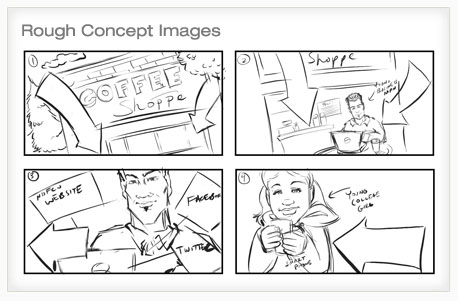
As I developed the storyboard and script, details started to emerge that were getting more and more specific. For example, I decided to create three main characters and thought it would be nice to have each of them visible in their own front window as the camera flies into the scene. This decision called for a very specific set: a coffee shop with three large front windows.
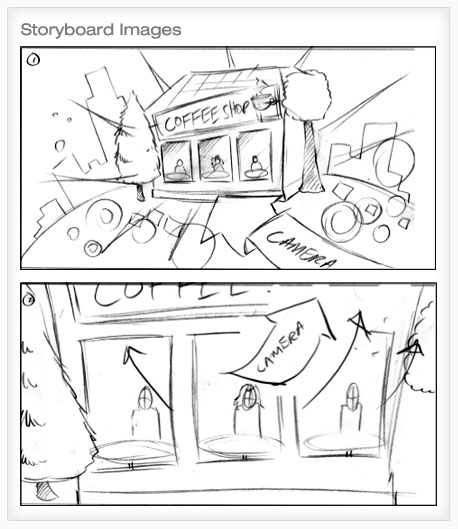
This, along with several other logistical issues, made finding such a location at the very least annoying. An easier route would be to shoot photos of brick walls, windows, doors, awnings, street lamps, etc. and construct a café from scratch that meets the exact parameters I needed for an ideal animation. So I pried my wife's digital SLR from her tight grip and headed outdoors. Nearly all of these images were shot within walking distance or a short drive from my house.
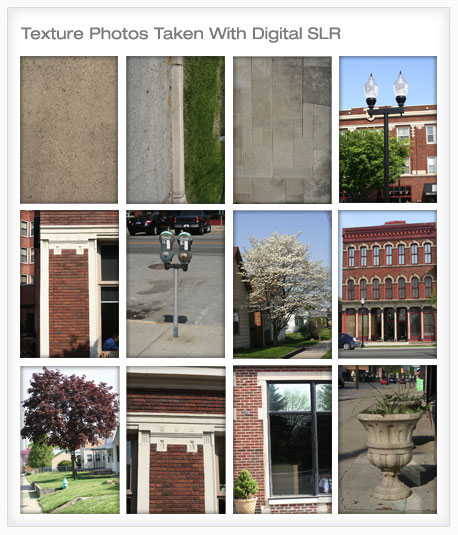
Then I assembled these textures and images in Photoshop to create the perfect storefront of this fictitious café. I put three big windows in front, one for each main character. This also allowed me to dress it up with other details to really sell the coffee shop look I wanted. I included layered images of the sides and top of the building and even the sidewalk and potted plants outside. What's great about this is that if there's something about your digital set you don't like, it can easily be changed.
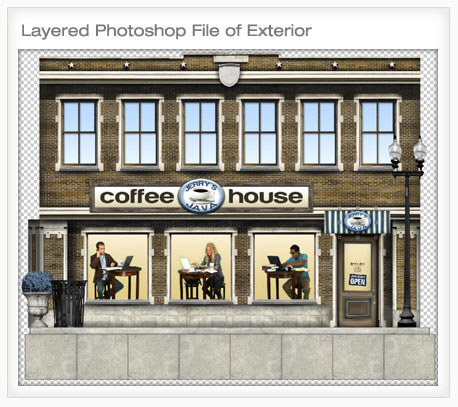
I then took all of those layers into a computer application where I could assemble them in 3D space, much like one would build a house of cards. The 2D images acted as walls and props. Below are some stills from the finished 3D set.
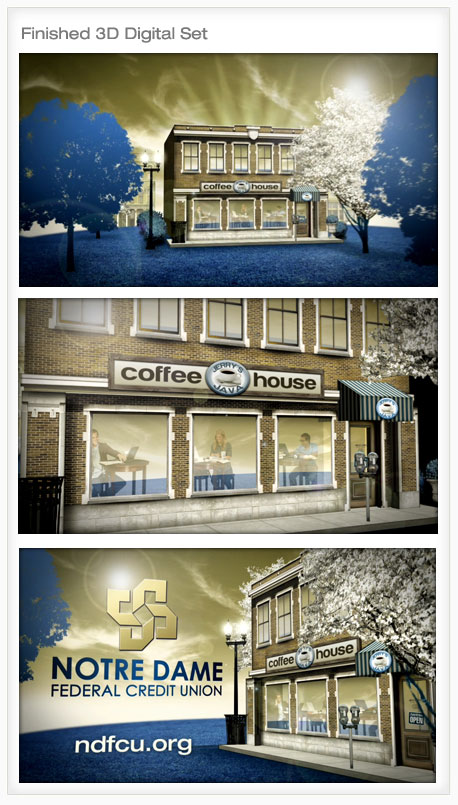
As you can see by shooting your own photography, it's free and easy to build custom digital sets like this, perfect for the needs of your project. If I had instead tried to look for the ideal building around town, I'd probably still be on a journey, much like Frodo in his impossible quest. Wow, I feel like such a nerd.
To get our latest articles when they are posted, please subscribe by e-mail or RSS.
